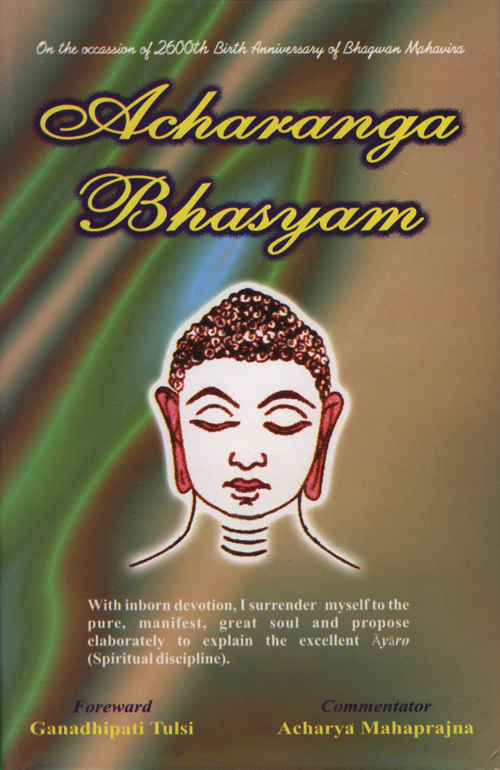1.145 pahū ejjassa dugaṃchaṇāe.
A non-violent person is capable of guarding himself against committing violence to air-bodied beings.
Bhāṣyaṃ Sūtra 145
Air pervades wherever living beings are in action. The question, therefore, naturally arises whether it is possible to abstain from injury to air-bodied beings. In reply, the Sūtra says that it is possible. One can avoid doing injury to them.
Air: This is called ejaḥ in Sanskrit because it flows (ejati).
Guarding against committing violence: It means restraint, desisting from action; avoidance; turning back; escape. These are all synonyms.
1.146 āyaṃkadaṃsῑ ahiyaṃ tti naccā.
Only the person who finds violence as fearful and harmful can desist from it.
Bhāṣyaṃ Sūtra 146
This is a supporting Sūtra. The perception of fear and knowledge of harm are the supports to desisting from violence.
Fear: It produces physical and mental pain. One who perceives fear in acts of violence does easily refrain from the latter.
The apparent good in the act of violence ultimately turns evil. The harmful behaviour is productive of harmful result. Such comprehension easily leads one to abstain from the acts of violence.
1.147 je ajjhatthaṃ jāṇai, se bahiyā jāṇai. je bahiyā jāṇai, se ajjhatthaṃ jāṇai.
One who knows the internal knows the external and one who knows the external knows the internal.[1]
Bhāṣyaṃ Sūtra 147
This is also a supporting Sūtra. The word 'internal' has different connotations in different contexts.
- The internal is what is concerned with the self.
- The internal is what is beyond the mind.
- The internal is the consciousness which is a common factor running through body, speech and mind of all living beings, mobile or immobile.
- The internal is the sensation of pleasure and pain.
- The internal is also the consciousness of the Jina.
Here the word 'internal' stands for the sensation of pleasure and pain. One who knows' the internal knows the external i.e., all living beings other than himself. The idea is that as there is the feeling of pleasure and pain with respect to the desirable and the undesirable in oneself, so there is similar feeling in the living beings of the external world. The Sūtra also gives the converse: one who knows the external knows the internal.
1.148 eyaṃ tulamaṇṇesiṃ. Try to investigate this comparison.Bhāṣyaṃ Sūtra 148
Now look at the comparison explained in the preceding Sūtra. As my suffering is not desirable to me, so the sufferings of others are not desirable to them. The understanding of this comparison with the self is a support to abstinence from violence.[2]
1.149 iha saṃtigayā daviyā, ṇāvakaṃkhaṃti vῑjiuṃ.[3]The competents who have achieved tranquillity do not take to fanning.
Bhāṣyaṃ Sūtra 149
Here the Sūtra explains the act of injury to the air-bodied beings and abstinence from it by pointing out the example of fanning. The monks initiated in the discipline of the Jina do not take to fanning. The reason is twofold: they have attained tranquillity and they have also the competence to practise self-restraint.
Tranquillity: The calming down of the passions.
Competent to practise self-restriant: Free from lust and hatred or free from attachment to body. It also means monks with their heart melted by compassion. Such persons are tranquil even in hot summer. Therefore they do not need to get tranquillity by fanning which involves injury to air-bodied beings.
This aphorism can be interpreted in three different ways:
- The intrinsic aspect of a substance is subtle, while the external one is gross. It is easy to comprehend the latter, but difficult to comprehend the former. One who can comprehend the former can distinctly comprehend the latter also. One who has comprehended the latter is able to know the former only through the medium of the gross. The soul is an inner reality. Its conscious form cannot be distinctly comprehended. But its functions, manifested through the body, are gross and external. It follows from this that a body, devoid of consciousness cannot perform functions of consciousness, the functions of consciousness are the functions performed by the conscient reality (soul).
- A person directly experiences pain and pleasure and as such they are immediate and self-perceptible. On the basis of the self-experience we can understand the pains and pleasures of others. Therefore, the feeling of pains and pleasures of others is an indirect one. The way in which we are affected by any external cause is the same in which others are affected and the way in which the others are affected by external causes is the same as the way in which we ourselves are affected.
- Knowledge like the sun is self-luminary. Just as the sun is self-luminary and illuminates other objects, knowledge is self-luminary and enlightens other substances. The function of knowledge is to know the knowable. Knowledge is self-luminary and therefore reveals the spiritual substance - it reveals the self. It enlightens others and therefore it reveals the external world i.e. it reveals the whole gamut of knowable objects, distinct from the self, but the knowledge that reveals the external world and internal world is one and the same. That is why, the author has laid down -
- Perception of terror caused by violence.
- Realisation of detrimental consequences of violence.
- Equality of all other beings with the Self - that is to say that just as we like pleasure and dislike pain, so do other beings and the vice versa.
 Acharya Mahaprajna
Acharya Mahaprajna

